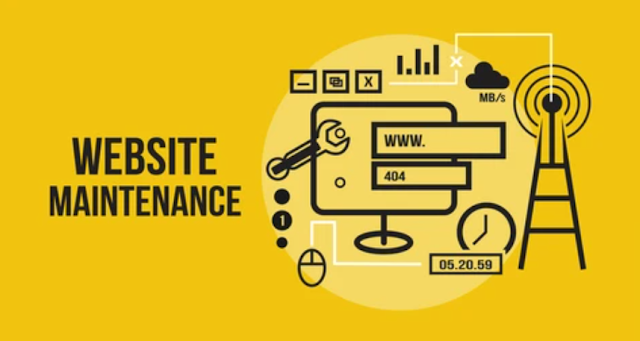A Complete Guide to Website Maintenance Best Practices
Website maintenance is a crucial aspect of managing a successful website. It involves a series of ongoing tasks and practices to ensure the website's security, performance, and usability. Here's a comprehensive guide to website maintenance best practices:
Regular Backup:
Regularly backing up your website's files and databases is essential. Backups serve as a safety net in case of data loss, security breaches, or website malfunctions. Schedule automated backups and store them securely on off-site servers or cloud storage platforms.
Software and Plugin Updates:
Keep your website's content management system (CMS), themes, and plugins up to date. Outdated software can pose security vulnerabilities. Set up notifications for updates and apply them promptly to ensure your website remains secure and optimized.
Security Measures:
Implement robust security measures to protect your website. This includes using strong passwords, enabling SSL/TLS encryption, implementing a firewall, and regularly scanning for malware or vulnerabilities. Monitor and respond to security alerts promptly to address any potential threats.
Performance Optimization:
Optimize your website's performance to enhance user experience and increase conversion rates. This includes optimizing page load times, compressing images, minifying CSS and JavaScript files, utilizing caching mechanisms, and employing content delivery networks (CDNs). Regularly monitor and test your website's performance using tools like Google PageSpeed Insights or GTmetrix to identify and address any performance issues.
Content Updates:
Regularly review and update your website's content. Ensure that all information is accurate, relevant, and up to date. Remove outdated or duplicate content, refresh existing content, and add new content to keep your website engaging and valuable to visitors. Regularly check for broken links and fix them promptly.
User Experience Enhancements:
Focus on improving user experience to keep visitors engaged. Optimize website navigation, improve site structure, and enhance the overall usability of your website. Pay attention to mobile responsiveness and accessibility, ensuring that your website is usable across different devices and for individuals with disabilities.
SEO Maintenance:
Implement SEO best practices to improve your website's visibility in search engine rankings. This includes optimizing meta tags, headings, URLs, and internal linking structure. Regularly monitor keyword rankings, conduct keyword research, and update your content to align with current search trends and user intent.
Analytics and Monitoring:
Utilize website analytics tools to track and analyze user behavior, traffic sources, conversion rates, and other key performance indicators. Regularly review the data and use the insights gained to make data-driven decisions and optimize your website's performance and marketing strategies.
Regular Testing:
Conduct regular testing to ensure that all website functionalities, forms, and interactive elements are working correctly. Test your website across different browsers, devices, and operating systems to ensure consistent performance. User testing can provide valuable feedback on usability and identify areas for improvement.
Compliance with Legal Requirements:
Stay compliant with relevant legal requirements such as data protection regulations (e.g., GDPR) or accessibility standards (e.g., WCAG). Regularly review and update your privacy policy, terms of service, cookie consent mechanisms, and other legal documentation as needed.
Website Uptime Monitoring:
Use website monitoring tools to track your website's uptime and promptly address any downtime issues. Monitoring helps ensure that your website remains accessible to users at all times and minimizes any negative impact on user experience or SEO.
Regular Maintenance Schedule:
Create a website maintenance schedule to ensure that tasks are performed consistently and in a timely manner. This schedule should include daily, weekly, monthly, and quarterly tasks to cover all aspects of website maintenance.
By following these best practices, you can ensure that your website remains secure, performs optimally, provides an excellent user experience, and stays in compliance with industry standards and legal requirements. Regular and proactive maintenance is crucial for the long-term success and sustainability of your website. Make website maintenance a priority to protect your investment, enhance user satisfaction, and achieve your business goals.












